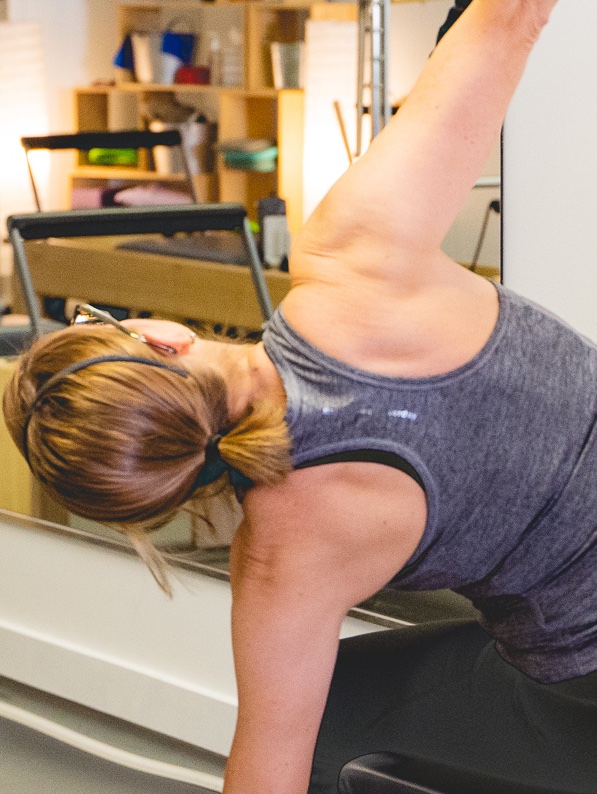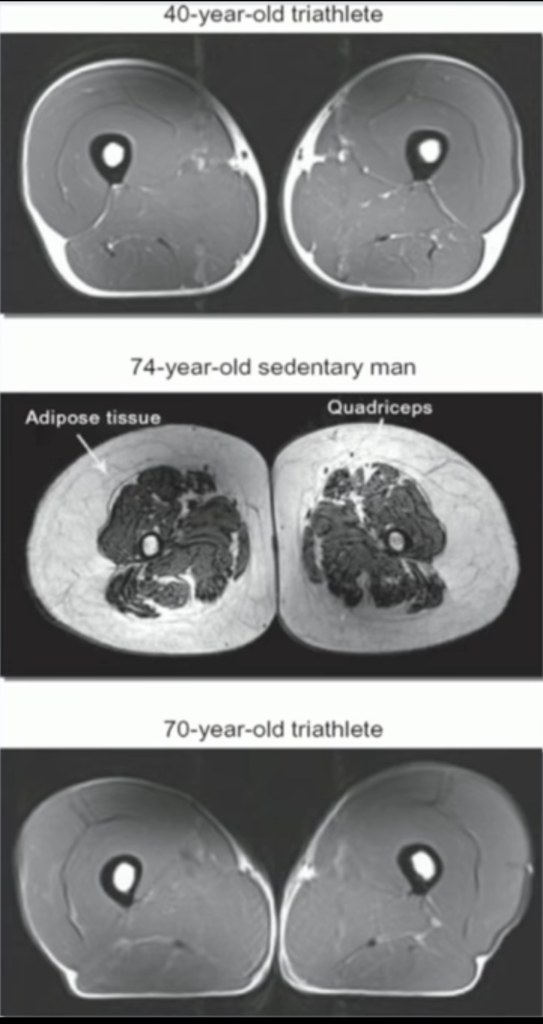 It’s easy to intuit some of the reasons that it’s beneficial to have more muscle. With more and stronger muscle, we’re able to do a greater variety of things, and the things we do in our daily lives (climbing stairs, carrying groceries, etc.) become much easier to do.
It’s easy to intuit some of the reasons that it’s beneficial to have more muscle. With more and stronger muscle, we’re able to do a greater variety of things, and the things we do in our daily lives (climbing stairs, carrying groceries, etc.) become much easier to do.
You may have heard that having more muscle “increases your metabolism” – that’s true, but it’s only true while that muscle is in motion. When muscle is contracting, it releases chemical messengers that do all sorts of things throughout the body, including those things that we would perceive as having an “increased metabolism”. These chemical messengers are called myokines and they do things like:
- Improve our insulin sensitivity and blood triglyceride levels.
- Shift the balance away from building more fat tissue and toward building more lean muscle tissue.
- Oppose inflammatory cytokines, meaning that they decrease our overall systemic inflammation, i.e. we have less pain and stiffness along with the other deleterious effects of inflammation.
And when it comes to bone mineral density, here’s what we know:
• Reductions in strength precede osteoporosis
• Increases in strength predict improvements in bone density
• It was once thought that this was due to mechanical loading (the stress that muscle places on bone), but
• Now we know it’s largely due to myokine signaling!
And possibly the most exciting effect: Dr. Simon Melov identified 179 genes related to aging (meaning that over the course of a lifetime, these genes change their expression in ways that we identify as aging processes). After just 26 weeks of strength training, these genes reverted back to their youthful expression! This was the first successful reversal of aging at the genetic level in humans.
Instead of saying a thousand more words about muscle, here are some pictures. These are MRI images that are a cross-section of the thigh. The white dot in the middle is bone marrow, the dark ring around that is the shaft of the thigh bone. The gray area of thigh muscle is surrounded by the white ring of fat tissue. Notice how little difference there is between the 40 year old triathlete and the 70 year old triathlete? Which person in their 70’s is best positioned to live long and prosper?

The foregoing is from the writings and lectures of Dr. Doug McGuff, an emergency room physician who wrote the book on effective strength training.
Step 1: Change Your Mind
Let’s talk about the first crucial step toward building and maintaining our muscle mass for a lifetime. The first step is to CHANGE YOUR MIND: focus on gaining muscle, not losing weight.
If you’re an American woman over the age of 40, there’s a really good chance you’ve been running the same program your entire life, which is “LOSE WEIGHT LOSE WEIGHT LOSE WEIGHT LOSE WEIGHT…” And that’s unproductive and problematic for a number of reasons.
First, instead of using that mental and physical energy to be more of whatever we’d like and better at things we enjoy, we’re trying to be LESS of whatever we are, and that’s a self-denigrating mindset that cannot help but spill over into other areas of life.
But here’s the problem with that mindset in terms of our health: pretty much every action we take when the stated goal is weight loss – be it chronic calorie restriction or excessive cardio or Ozempic – will cause a significant proportion of the weight we lose to come from our lean body mass. We only scratched the surface above regarding all the ways our muscle mass is critical to our health and wellbeing, but hopefully that was enough to convince you it’s a big deal.
So, the first step in this process is a mental maneuver. Figure out how to fully reorient yourself away from thoughts of weight LOSS to muscle GAIN. We promise that everything you associate with “weight loss” – from how your clothes fit to improved bloodwork – will follow.
We challenge you to throw away the scale! The home scales that claim to tell you your body composition in addition to your weight aren’t really that effective anyway. You will KNOW you have more muscle when you see it and feel it and watch all of your true parameters of health improve.
It can be difficult to abruptly change a mindset with a lifetime of momentum behind it, and that’s when it can be really helpful to read a book on the topic, in this case Forever Strong by Dr. Gabrielle Lyon. She’s a geriatrician with years of experience in clinical practice, seeing lives completely changed (and in many cases, saved) with an emphasis on what she calls Muscle-centric Medicine.
Building muscle is hard work, there’s no way around it, so equip yourself with knowledge to keep you inspired through the challenges ahead!
